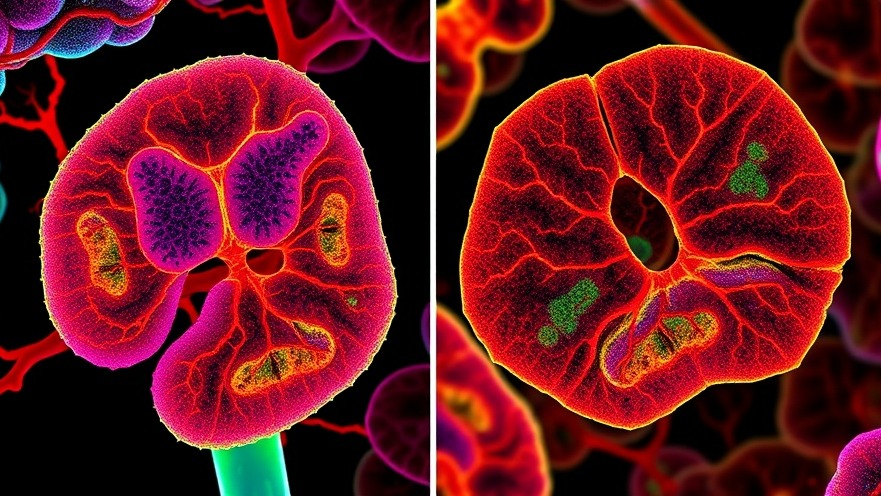
Understanding Gene Therapy's Potential for HIV Treatment
Recent advances in gene therapy offer a promising avenue in the quest for a durable solution to HIV infections. Researchers at Johns Hopkins University have identified a molecule inherent to HIV, known as an 'antisense transcript' (AST), which can be manipulated to encourage the virus’s dormancy. This breakthrough is pivotal, as it could help HIV-infected individuals achieve a long-term state wherein the virus does not replicate.
The Mechanics of Viral Dormancy
HIV employs complex mechanisms to evade the human immune system. Traditionally, standard treatment regimens involve antiretroviral medications that prevent the virus from reproducing; however, these treatments require continual adherence and can lead to significant long-term side effects. AST's role in inducing viral latency presents a compelling alternative. By amplifying the production of this molecule, researchers believe it could trigger a protective dormancy in HIV, reducing infection rates and enhancing patient wellbeing.
The Landscape of Current HIV Treatments
Currently, there are about 1.2 million people in the U.S. living with HIV, with treatment regimens often consisting of multiple daily doses of antiretroviral therapy (ART). This current approach, while effective in suppressing the virus, does not eliminate it, leading to a potential resurgence if therapy is stopped. On the global front, approximately 39.9 million people are living with HIV, and the World Health Organization reports 630,000 deaths annually due to HIV/AIDS complications. Gene therapy presents an opportunity to shift the paradigm from lifelong treatment to potentially curative interventions.
The Research Study: Key Findings and Implications
In their study published in Science Advances, the Johns Hopkins team examined the behavior of human CD4+ T cells—the primary targets of HIV infection. Their findings suggest that manipulating AST levels could effectively reduce the active presence of the virus, leading to a more stable and less harmful condition. According to Dr. Fabio Romerio, the enhancements in AST production underscore a significant shift towards achieving controlled viral latency in affected patients.
Addressing Concerns and Counterarguments
While the approach seems promising, concerns persist regarding the efficacy and safety of gene therapy as a replacement for traditional ART. Some experts voice skepticism about the long-term effects of manipulating viral components within the body, primarily due to the potential for unintended consequences. It is crucial for the medical community to examine these emerging findings critically while weighing them against established practices.
The Road Ahead: Future Predictions and Trends in HIV Treatment
The implications of successful gene therapy for HIV could reach beyond just treatment. As scientists continue to explore AST and other genetic components, we may witness shifts in how other viral infections are approached and treated. The potential for a one-time dose as opposed to a lifetime of medication could set precedents not only for HIV but also for other chronic viral conditions, changing the landscape of infectious disease management.
Final Thoughts and Actionable Takeaways
For concierge health practitioners, staying informed about such breakthroughs is essential. Understanding the potential benefits and mechanisms behind gene therapies like those targeting HIV can empower healthcare providers to create actionable pathways for their patients. Engaging in ongoing discussions about these clinical advancements will be crucial as the medical community grapples with evolving treatment paradigms.
As always, staying ahead of medical advancements not only enhances your practice's capabilities but significantly impacts patient outcomes. Consider integrating knowledge about emerging therapies like gene therapy into your care discussions, and stay connected with ongoing studies for the latest insights.
 Add Row
Add Row  Add
Add 






Write A Comment